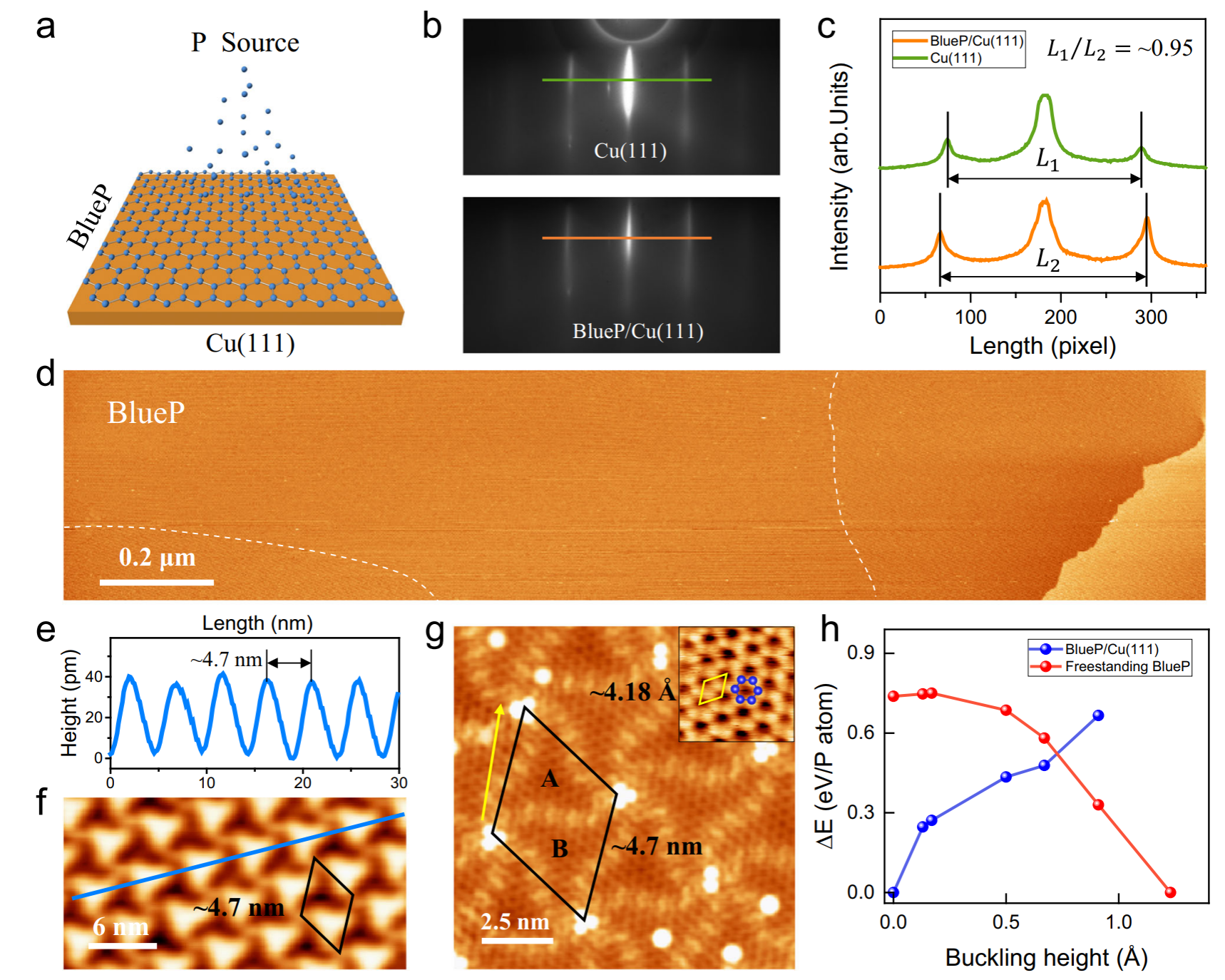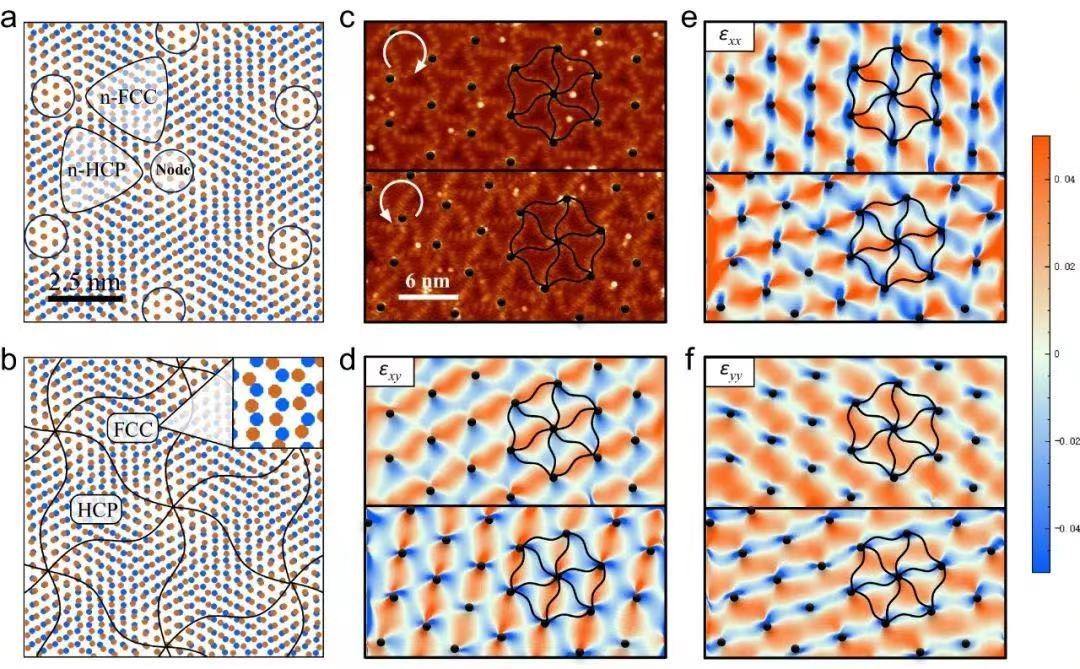Professor Weifeng Zhang’s team from the School of Future Technology (Provincial Key Laboratory of Photovoltaic Materials) at Henan University has recently made significant progress in the growth of a new type of single-layer two-dimensional chiral quantum material. Their research article, titled "Realization of large-area ultraflat chiral blue phosphorene," has been published in the journal Nature Communications.
Blue phosphorene (BlueP), a theoretically proposed phosphorous allotrope with buckled honeycomb lattice, has attracted considerable interest due to its wide band gap and excellent electrical properties. Density functional theory calculations have shown that under tensile stress, the buckled BlueP can transform into an ultraflat honeycomb lattice like graphene, with a linearly dispersed energy band near the Fermi level, becoming a new Dirac fermion system. Chiral materials break mirror symmetry and can exhibit different responses to incident left- or right-handed circularly polarized light, offering potential applications in optoelectronics, spintronics (valley electronics), and chiral catalysis. Chiral graphene has been realized in the twisted bilayer graphene system, which exhibits strong circular dichroism. Evidently, introducing chirality into BlueP can further enrich its physical and chemical properties and expand the application potentials. Due to the lack of corresponding bulk materials, BlueP can only be synthesized through bottom-up methods. A recent theoretical work showed that BlueP could be synthesized on GaN(001) through a half-layer-by-half-layer growth mechanism, and several groups reported experimental investigations on the molecular beam epitaxy (MBE) growth of nanometre-size BlueP layers on Au(111), Ag(111), Cu(111), and copper oxide substrates. However, large-area ultraflat chiral BlueP on the Cu surface remains elusive.
The research team successfully fabricated the large-area ultraflat chiral BlueP on Cu(111) by MBE, which is only limited by the wafer size. More importantly, they found that the BlueP is characterized by an ultraflat honeycomb lattice, rather than the prevailing buckled structure, and develops highly ordered spatial chirality plausibly resulting from the rotational stacking with the substrate and interface strain release, as further confirmed by the geometric phase analysis. Moreover, spectroscopic measurements reveal its intrinsic metallic nature and different characteristic quantum oscillations in the image-potential states. They also achieved reversible phase transitions between the chiral and achiral phases of ultraflat BlueP, revealing the unique growth mode of phosphorene on Cu(111). This research can be exploited for a range of potential applications including polarization optics, spintronics, and chiral catalysis.
Ye-Heng Song, a young teacher from Henan University, and M. U. Muzaffar, a postdoctoral fellow at the University of Science and Technology of China, are the co-first authors of the paper. Professor Weifeng Zhang from Henan University, Professor Xuesen Wang from the National University of Singapore, and Professor Zhenyu Zhang from the University of Science and Technology of China are the co-corresponding authors. The research was supported by the National Natural Science Foundation and others.
Professor Weifeng Zhang is a doctoral supervisor, second-level professor, and vice chairman of the Henan Provincial Physics Society. He is mainly engaged in research on condensed matter physics and quantum topological materials. He has won two second prizes in the Henan Provincial Science and Technology Progress Award (as the first completer), published more than 100 papers as the first or corresponding author, with a total citation of over 9,000 times. In the exploration of new energy materials, he has pioneered and promoted the research on the photocatalytic and photoelectric properties and devices of perovskite tin oxide materials.
Link to the paper: https://doi.org/10.1038/s41467-024-45263-6

Figure 1: Epitaxial growth of ultraflat chiral blue phosphorene on Cu(111) substrate.

Figure 2: Distribution of strain fields on the ultraflat chiral BlueP surface.



